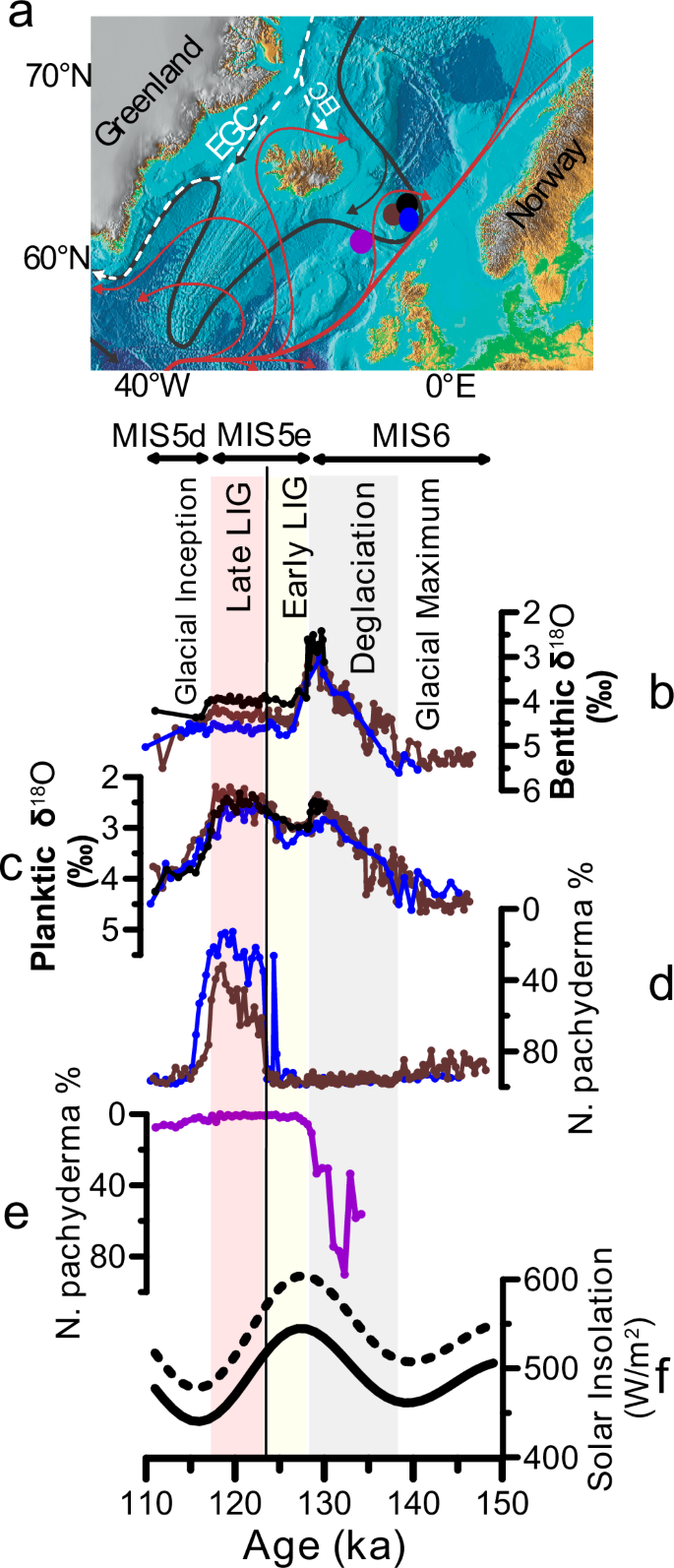Phys.org October 27, 2024
The Last Interglacial period (LIG) was characterized by a long-term Arctic atmospheric warming above the preindustrial level. The LIG thus provides a case study of Arctic feedback mechanisms of the cryosphere-ocean circulation-climate system under warm climatic conditions. Previous studies suggested a delay in the LIG peak warming in the North Atlantic compared to the Southern Ocean and evoked the possibility of southward extension of Arctic Sea ice to the southern Norwegian Sea during the early LIG. An international team of researchers (Norway, Germany) compiled new and published proxy data on past changes in sea ice distribution, sea surface temperature and salinity, deep ocean convection, and meltwater sources based on well-dated records from the Norwegian Sea. Their data suggested that southward outflow of Arctic freshwater suppressed Nordic Seas deep-water formation and northward oceanic heat transport during the early LIG. According to the researchers their findings showcase the complex feedback interactions between a warming climate, sea ice, ocean circulation and regional climate… read more. Open Access TECHNICAL ARTICLE

Map of Nordic Seas and proxy records for the peak Marine Isotope Stage (MIS) 6… Credit: Nature Communications volume 15, Article number: 8998, 27 October 2024